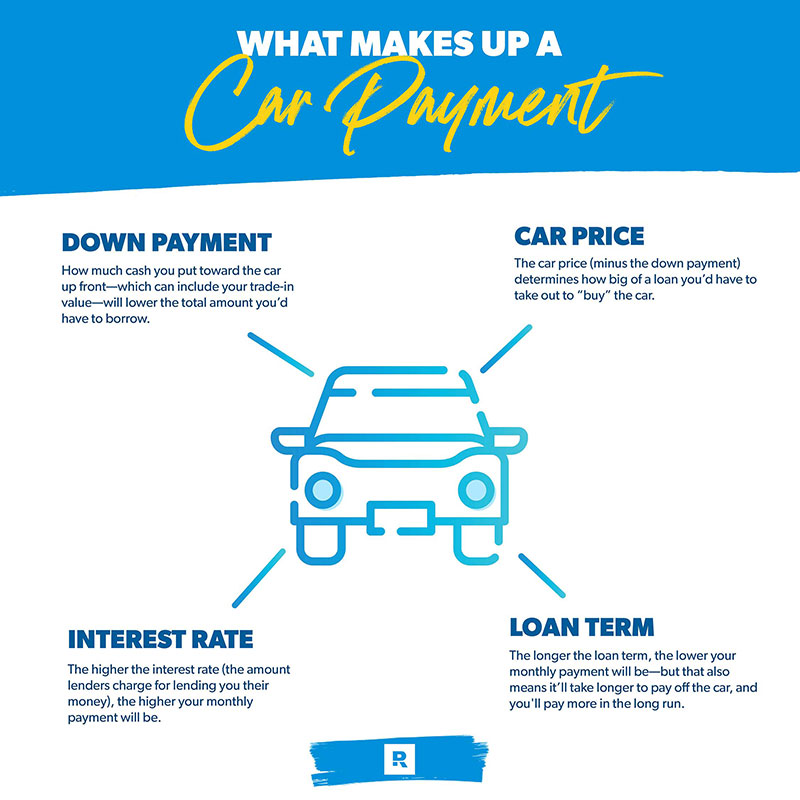

Because of this, larger loans may pack a higher interest rate.Ī down payment is money that you pay upfront when buying something on credit. The loan amount: The more money you are borrowing, the greater the risk for the lender.The loan term: Loans with longer terms may have higher interest rates.

Those who are a salaried employee may have an easier time getting a car loan than someone with variable income, like freelancers. Employment history and income: A lender wants to know that you make enough each month to make the monthly payment.However, it can still have a major impact on the rate you receive. Auto loans tend to be more lenient on credit score requirements for approval since the note is backed back collateral. It is based on your credit report, which is information sourced from the three major credit bureaus.
 Your credit score: This three-digit number tells lenders about your creditworthiness. Things that can affect the rate you get include: Generally, the higher the risk that your loan poses to a lender, the higher your interest rate will be. Your interest rate is set by the bank but can vary depending on several factors. With compounding interest, on the other hand, your monthly interest payments will be based on the principal and the interest that has already accumulated. With simple interest, you’ll just pay a certain percentage of the loan principal. There are two types of interest that you’ll see with auto loans: simple interest and compounding interest. It’s calculated as a percentage of your total loan amount and is added to the principal balance of the loan. With auto loans, the rate is fixed, meaning it doesn’t change over time. The loan rate, also called the interest rate, is what a lender charges in exchange for you being able to borrow the funds. However, if your interest compounds, you’ll pay more overall due to more interest payments. If you have a longer loan term, your monthly payments will be smaller. With a shorter loan term, you’ll have larger monthly payments but pay off the loan quicker. Your term affects how large your car payments will be, as well as how much you will ultimately pay. The most common loan term is six years, with seven-year loan terms following close behind. In 2020, the average loan term for a new car was 70.6 months, which is nearly six years. You can find auto loans with terms anywhere between 24 months and 84 months, or two to four years. Loan Term (months)Įvery loan or lease has a set term, or period of time, during which you’re supposed to pay off the loan. The dealer might suggest you roll the negative equity into your next car loan, but this means you will begin your new loan already upside-down-meaning you will owe more than your asset is worth. If your car is worth less than the amount remaining on the loan, you should be extra cautious when trading in your car. When you trade your car into the dealer, they will pay the loan off. Amount Owed on Trade-Inĭo you have an outstanding loan balance on the car you’re trading in? You’ll need to account for that here, as it will be subtracted from the overall trade-in value. Be sure to get-in writing-how much they value your trade-in.
Your credit score: This three-digit number tells lenders about your creditworthiness. Things that can affect the rate you get include: Generally, the higher the risk that your loan poses to a lender, the higher your interest rate will be. Your interest rate is set by the bank but can vary depending on several factors. With compounding interest, on the other hand, your monthly interest payments will be based on the principal and the interest that has already accumulated. With simple interest, you’ll just pay a certain percentage of the loan principal. There are two types of interest that you’ll see with auto loans: simple interest and compounding interest. It’s calculated as a percentage of your total loan amount and is added to the principal balance of the loan. With auto loans, the rate is fixed, meaning it doesn’t change over time. The loan rate, also called the interest rate, is what a lender charges in exchange for you being able to borrow the funds. However, if your interest compounds, you’ll pay more overall due to more interest payments. If you have a longer loan term, your monthly payments will be smaller. With a shorter loan term, you’ll have larger monthly payments but pay off the loan quicker. Your term affects how large your car payments will be, as well as how much you will ultimately pay. The most common loan term is six years, with seven-year loan terms following close behind. In 2020, the average loan term for a new car was 70.6 months, which is nearly six years. You can find auto loans with terms anywhere between 24 months and 84 months, or two to four years. Loan Term (months)Įvery loan or lease has a set term, or period of time, during which you’re supposed to pay off the loan. The dealer might suggest you roll the negative equity into your next car loan, but this means you will begin your new loan already upside-down-meaning you will owe more than your asset is worth. If your car is worth less than the amount remaining on the loan, you should be extra cautious when trading in your car. When you trade your car into the dealer, they will pay the loan off. Amount Owed on Trade-Inĭo you have an outstanding loan balance on the car you’re trading in? You’ll need to account for that here, as it will be subtracted from the overall trade-in value. Be sure to get-in writing-how much they value your trade-in. 
On the $25,000 loan examples, the interest rate would result in payment terms of 60 months at 4.630% APR and a monthly payment of $467.56 72 months at 5.237% APR and a monthly payment of $405.38 78 months at 5.470% APR and a monthly payment of $381.59 or 84 months at 5.807% APR and a monthly payment of $362.90.Trading in a car? The value will count toward your overall purchase price! But beware-what you think the value of your car is and what the dealer will actually give you for it are two different things.On the $15,000 loan examples, the interest rate would result in payment terms of 60 months at 4.820% APR and a monthly payment of $281.84 72 months at 5.398% APR and a monthly payment of $244.36 78 months at 5.620% APR and a monthly payment of $230.02 or 84 months at 5.947% APR and a monthly payment of $218.75.Payment examples are based on 2022 or newer model, loan terms and interest rates of 60 months at 4.34% 72 months at 4.99%, and 84 months at 5.59% all of which include a $175.00 processing fee (financed into the loan).4.630% APR based on $25,000 loan, 2022 or newer model year, 60 month loan term, 4.34% rate, $467.56 monthly payment and a $175.00 processing fee (financed into the loan).25% rate reduction for automatic payment from an Old National checking account. All rates/Annual Percentage Rates (APRs) examples are based on highest credit tier and include a. Other restrictions may apply, see bank for details. Rates, terms and conditions effective as of and are subject to change.








 0 kommentar(er)
0 kommentar(er)
